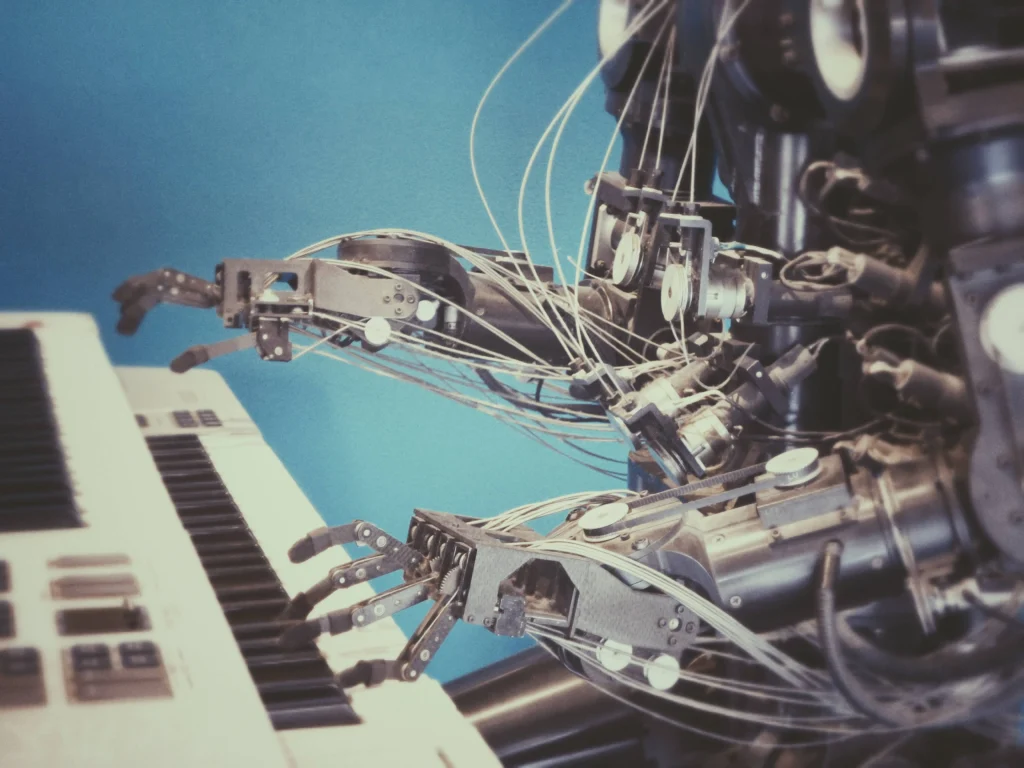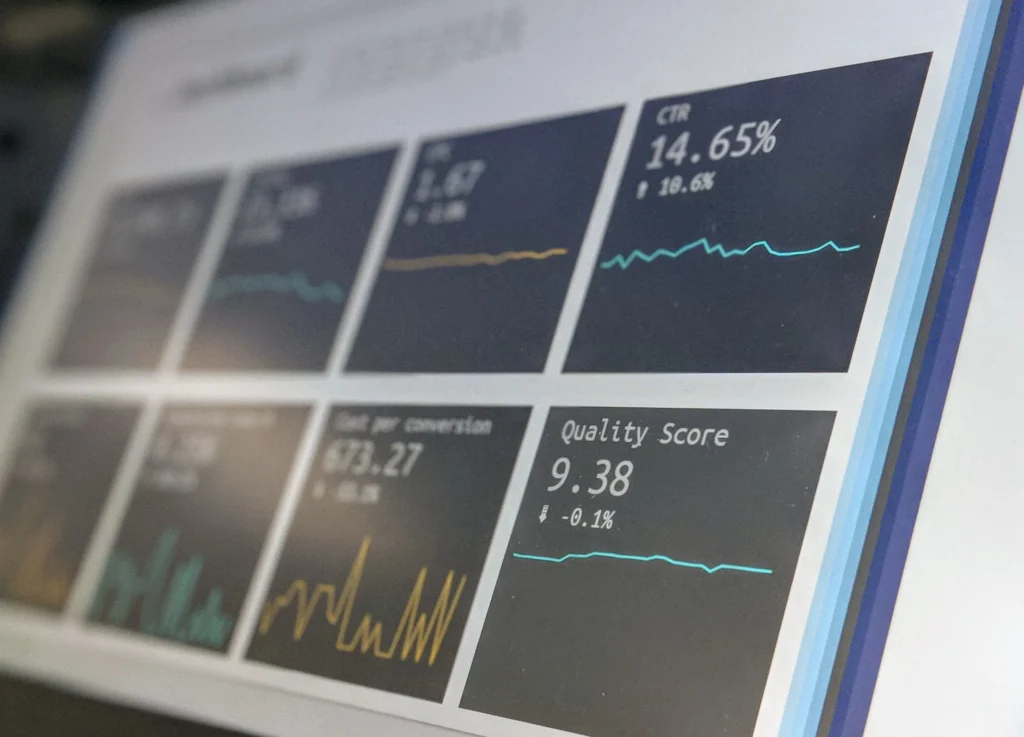Artificial Intelligence uses human cognitive powers to make a machine respond without any external help. It is defined as a process where a device tries to make decisions or react like a human brain. Artificial intelligence (AI) enables computers to perform various complex functions, including seeing, hearing, interpreting, and translating spoken and written language, analyzing data, and generating suggestions.
Artificial Intelligence has several applications in today’s society as it can solve complex problems efficiently in multiple industries, such as engineering, healthcare, transportation, robotics, agriculture, gaming, finance, education, etc. This technology is making life more comfortable and fast.

Best Applications of Artificial Intelligence
As we have stated artificial intelligence has many applications in e-commerce, finance, robotics, healthcare, chatbots, facial recognition, transportation, social media, etc. Here are listed some of the best applications of AI with examples.
Robotics
Artificial Intelligence is what is connected to robotics when we hear about the concept, don’t we? Well, it is one of the major technologies that form the basis of robotics to boost the efficiency of their functioning. AI is currently assisting robotics in developing the field to use in various verticals and industries, particularly in the manufacturing and packaging industries.
This technology enables robots to make decisions in real time and increase their productivity. For example, a warehouse employs robots to bundle and manage packages; they will do it faster than humans without developing lethargy. The robots are only designed to deliver the task, but AI helps them to analyze the vacant space and make suitable decisions in real time. AI provides robots with a computer vision that allows them to see, navigate, sense, and react appropriately.
An important part of computer programming and AI, machine learning guides robots to learn tasks from humans. Humanoid robots would be the best example so far. Erica and Sophia, popular humanoid robots at recent, are advanced enough to talk and behave like humans.
E-Commerce
The field of e-commerce has grabbed the attention of artificial intelligence, too. It helps an organization to establish a relationship between a consumer and the brand. AI helps provide appropriate suggestions and recommendations per the customer search history and view preferences. AI chatbots are created to provide customer support instantly and bring suitable redressals to complaints and queries to a great extent. Let’s take a closer look at AI applications in e-commerce:
Personalization: This feature enables customers to see those products based on their interest patterns, eventually driving more conversions.
Enhanced Support: Empowered AI chatbots attend to every customer’s query to reduce the churn ratio and can handle questions 24*7.
Fake Review Detection: Artificial Intelligence clears out fake customer reviews as 9 out of 10 people prefer going through product reviews by past customers before placing any order.
Dynamic Pricing Structure: A smart way to fluctuate the price of a product by data analysis from different sources.
Voice Search: This feature is widely used in e-commerce, especially online shopping. It has been seen that the US market growth has risen to 400%, i.e. from $4.6 Billion to $20 Billion in just 2 years.
Healthcare
Artificial Intelligence is helping healthcare businesses and medical care institutions to help save lives. Several examples of how AI provides all-round protection in the healthcare sector and has benefitted patients worldwide. Let’s understand some of the best uses of AI in the subdomains of healthcare.
Administration: AI systems assist normal, day-to-day administrative activities like scheduling meetings and maintaining organized file systems. This way there are fewer human errors and increased productivity.
Assisted Diagnosis: AI can now interpret MRI scans to check out tumours and other harmful diseases 10x faster than radiologists, with a narrower margin of error, thanks to computer vision and convolutional neural networks.
Robotic Surgery: Robots can perform operations with a very small margin of error and can operate 24 hours a day, 7 days a week without getting weary. They work precisely and potentially save a patient’s time in a hospital to recover.
Health Monitoring: With several wearable devices coming mainstream, a person’s health status can be determined by the various levels of their vital statistics. They can be analyzed and turned into meaningful insights.
Finance
According to some recent surveys, 80% of banks agree that AI provides beneficial insights into the decision-making in finance. From providing corporate finance advice to predicting future outcomes related to finance, AI is capable of sending automated tests and mail, risk predictions in loans, and detecting any unwanted transactional activities of the targeted customers. Other tools such as spam and fraud filters, responding to threats, and uncharacterized actions are advantages AI brings to the finance sector.
Fraud Detection: AI algorithms identify patterns and anomalies that can lead to fraudulent activities by analyzing large volumes of data.
Risk Management: Using AI algorithms enables safeguard risk assessment models to analyze large datasets in real-time and identify potential risks.
Forecasting: AI-powered tools ease financial planning and forecasting by creating simple opportunities for businesses to make effective business decisions. This is achieved through analyzing historical data, economic indicators, and market trends.
Facial Recognition
Face recognition is an application of artificial intelligence that focuses on learning and recognizing patterns, leading to quick and efficient outputs.
Facial Recognition is a sort of technology that maps and saves a person’s facial characteristics as a face print. The software uses deep learning techniques to match a current image to a stored facial pattern to authenticate identification. Machine learning and image processing are the foundations of this technology.
Face recognition has caught the interest of researchers due to the human actions found in various security applications such as airports, criminal detection, face tracking, forensics, and so on. Face biometrics can be less intrusive than other biometric characteristics such as palm print, iris, and fingerprint.
So when you’re about to take a selfie and register it for facial recognition, your phone learns your face recognition algorithm, and the next time you log in without typing a password, your phone will unlock itself using your imagination.
Travel and Transport
An intelligent transport system uses Artificial Intelligence to improve the travel experience of travellers. Truck platooning is an efficient method of transporting heavy loads using artificial intelligence. The use of Artificial Intelligence makes it possible to route travel and share rides using real-time traffic information.
Planning and Personalization: AI uses past and real-time data to offer customized, flexible plans under their budget. This brings in more sales & matches the needs of the individual.
Predictive Analysis (Pricing): AI algorithms analyze historical travel data market trends and study other variables. This also helps in predicting demand patterns.
Route Analysis: AI detects & alarms users about any incoming traffic during their usual route navigation using its variables to improve user experience.
Chatbots
Chatbot is a tool that is used to respond to the text given to them as input. Customers or user submits a query according to their need and the chatbot will respond to the query with the most appropriate output as the best possible solution. Let’s know the work of artificial intelligence in chatbots.
NLP: Chatbots can interact more effectively with humans over chat by using Natural Language Processing to resolve inquiries quickly.
Multi-Language: AI-powered chatbots can provide support to users worldwide in multiple languages. NLP algorithms enable chatbots to understand and generate suitable responses.
Adaptation: AI algorithms continuously improve and learn over a certain period. Through machine learning techniques, chatbots can analyze and identify improvement areas and thus update themselves based on shared details.
Social Media
Social networking firms employ artificial intelligence techniques to study large amounts of data to determine trends, use hashtags, and analyse patterns. This research helps learn the comprehension of user behaviour.
To give a personalized experience and predict crises, artificial intelligence can monitor unstructured user comments in various ways. Technology can also aid in content development by analysing numerous activities and demographics.

Let’s see how some popular social media websites or apps use artificial intelligence:
Instagram: AI considers your interests and the accounts you follow on Instagram to sort which posts should appear in your Explore tab.
Facebook (Meta): It uses Artificial Intelligence as well. Facebook uses a technique known as DeepText to interpret discussions and also to translate posts between languages.
Twitter: This social media platform uses AI for fraud detection, propaganda removal, and removal of hateful content. Twitter also uses AI to suggest tweets to users depending on the types of tweets they engage with.
The Final Thoughts
So, we have seen the various applications of artificial intelligence in the current world scenario. As we have already understood artificial intelligence is the process where a machine makes decisions like a human brain. AI finds wide applications in e-commerce, healthcare, automobiles, finance, etc. Not only does it interact with a human via chat, but it is also capable of carrying out complex operations and calculations that an average human brain can’t. If there is something the upcoming future generation will witness, it would be the advanced AI, of course!
Frequently Asked Questions
How is Artificial Intelligence used in everyday life?
When we want to generate an official email to reach to clients or get driving directions, AI adds a lot of benefits in every aspect of life. Below are some important uses of artificial intelligence in daily life:-
- Virtual assistance
- Self-driving cars
- Writing
- Movies/songs recommendations
- Taking photographs
How is Artificial Intelligence likely to be used in the future?
Though AI is still a new concept, but it is rapidly evolving. Some possible uses can be:
- Government: To improve public services, fraud detection, healthcare services, educational institutions.
- Space exploration: To develop new technologies for exploring some hidden areas of space and colonizing other planets.
- Environment: To develop new strategies and technologies for the pollution reduction and environment protection.
- Education: To create personalized learning experiences, such as helping students learn a technological aspects at their own pace.
How financial institutions can take advantages from AI?
AI and financial institutions can be the best partners when it comes to implement automation, adaptive intelligence, chatbot, machine learning, and algorithm trading.
What are the benefits of Artificial Intelligence?
Some of the advantages of AI include:
- Machine Automation
- Solving Complex Problems
- Improve technical efficiency
- Minimizing Errors
- Smart Decision Making
- Medical Advancement

